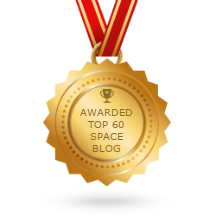I Explored Space by Mapping It
/Last week I told about my work with NASA to determine the best place to park a new space station. My team created a detailed plan consisting of designs, analysis, drawings, trajectories and cost estimates to park a space station at L2 with a direct view of deep space and the far side of the Moon.
What I didn't tell you is what happened after that.
Seven months later, NASA scrapped the mission concept. Agency leaders chose not to send a station to L2. Instead, NASA would focus on an entirely different task: to land a robot on an asteroid and bring back a sample. When we heard the news, we were understandably disappointed. But our work wasn’t in vain.
Seriously: our work was not in vain. Without a single one of us making the leap into space, our team had explored it. We did it with math, powerful computers, and a whiteboard. Our calculations and plans can also be used to get to the asteroid—and to Mars for that matter—and they will help catalyze other missions. Essentially, we were cartographers, and that is no small thing. Christopher Columbus’s mission to the New World was an act of cartography: his initial assignment by the king and queen of Spain was to map a course from Europe to Asia. Getting to China wasn’t really the point; not to mention the fact that there happened to be a continent in the way. The point of Columbus’s mission was a map, one that later voyagers could follow. The team I worked with at NASA did the cartography in front of a whiteboard and in the computers of our teams around the country.
You don’t see this sort of work in the news media, understandably. Just about every week the news bears the latest successful NASA missions, complete with colorful photos. Meanwhile, some of the best minds in the agency are working on tools and methods that never get off the ground—not, at least, in ways the teams intend. No private company would put up with this kind of R&D of constant apparent dead-ending. Spread out over a hundred million taxpayers, however, the risk becomes positively palatable. And ultimately it produces benefits for the greater good. The missions may never leave the ground, but they live on as acts of invention and discovery. The tools and methods get used by other missions and worked into ever more sophisticated tools and methods. Our labors on L2 are getting incorporated into the asteroid and other missions. Multiply this effect among the many major programs at NASA, and among the dozens of current missions, and you have a vast creative engine of inventio: the marriage of invention and discovery.




